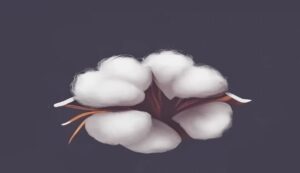Modern technology aids cotton growers in their battle against pink bollworm
Focus on the farmer and struggle. Pink bollworm (PBW) infestations that were severe enough to cause years of hardship for cotton farmer Jagdev Singh started in 2021. His 0.6-hectare cotton field has greatly reduced his revenues due to these infestations. But this year, a ray of optimism appeared when Singh was selected as one of eighteen farmers for an innovative pilot project launched by the Indian Council of Agricultural Research’s (ICAR) subsidiary, the Central Institute for Cotton Research (CICR).

AI Empowering Farmers to Fight Pests
This creative concept uses state-of-the-art artificial intelligence (AI) technology to monitor pests in real time. The CICR seeks to provide farmers like Singh with the vital information they need to make prompt choices about pest control by using AI-powered pheromone traps. With this initiative, India will be at the forefront of using AI for agricultural pest management, which is a revolutionary development.
Six farms are chosen from each of Punjab’s three main cotton-growing districts, Muktsar, Bathinda, and Mansa, to participate in the pilot program. This innovative method has the potential to drastically lower financial losses for farmers dealing with PBW infestations.
Rajasthan and Haryana are expected to join the effort when the Punjab pilot program proves successful.
Cotton’s Menace
Pectinophora gossypiella, or PBW, as it is officially called, is infamous for causing harm to cotton fruit that is still growing, including flower buds and seed sacs that contain cotton fibers. The livelihoods of farmers and cotton harvests are seriously threatened by this bug.
Infestations of PBW have caused damage to cotton crops in Punjab, Haryana, and Rajasthan, among other northern Indian states, over the last three years. This insect has been shown to be tenacious even in genetically engineered pest-resistant types such as Bt cotton (Bollgard II seed).
PBW reduces yield by at least 20–25% on average. A recent investigation by Down to Earth (DTE) revealed the disastrous effects of PBW infestations on northern Indian cotton cultivation.
Innovative Pest Control Strategy
The new device uses pheromone traps that are equipped with a bait known as gossypler, which is released by female moths to entice their male counterparts. These kinds of traps have been employed historically to control agricultural pests; however, farmers usually place five traps per hectare and keep an eye on male moth activity to see whether it rises beyond the economic threshold level (ETL).
Farmers find it difficult to conduct routine monitoring, particularly when they are managing many kharif crops at once. Singh testified to the challenges associated with manually monitoring infestations and the unpredictable nature of insect invasions when using conventional techniques.
Real-Time Pest Monitoring with Automated Mobile Alerts and Visual Analysis
Farmers get hourly harvest information on their cell phones under the new computerized system. Cameras attached to traps collect images of pests, which are then sent to a cloud server for in-the-moment analysis. These photos are processed by a machine learning system that counts and identifies PBWs that are caught. Authorized users such as ICAR scientists, farmers, and agricultural officials may access this data in real time.
Based on scientific research, the system offers early recommendations on pest management, assuring efficient control and limiting losses below the threshold level of economic impact. Officials from the agricultural department also have access to this data in order to expand campaigns and notify a wider group of farmers. Singh’s experience demonstrates how the system works to protect crops and farmers’ earnings by allowing quick reactions to insect infestations.

